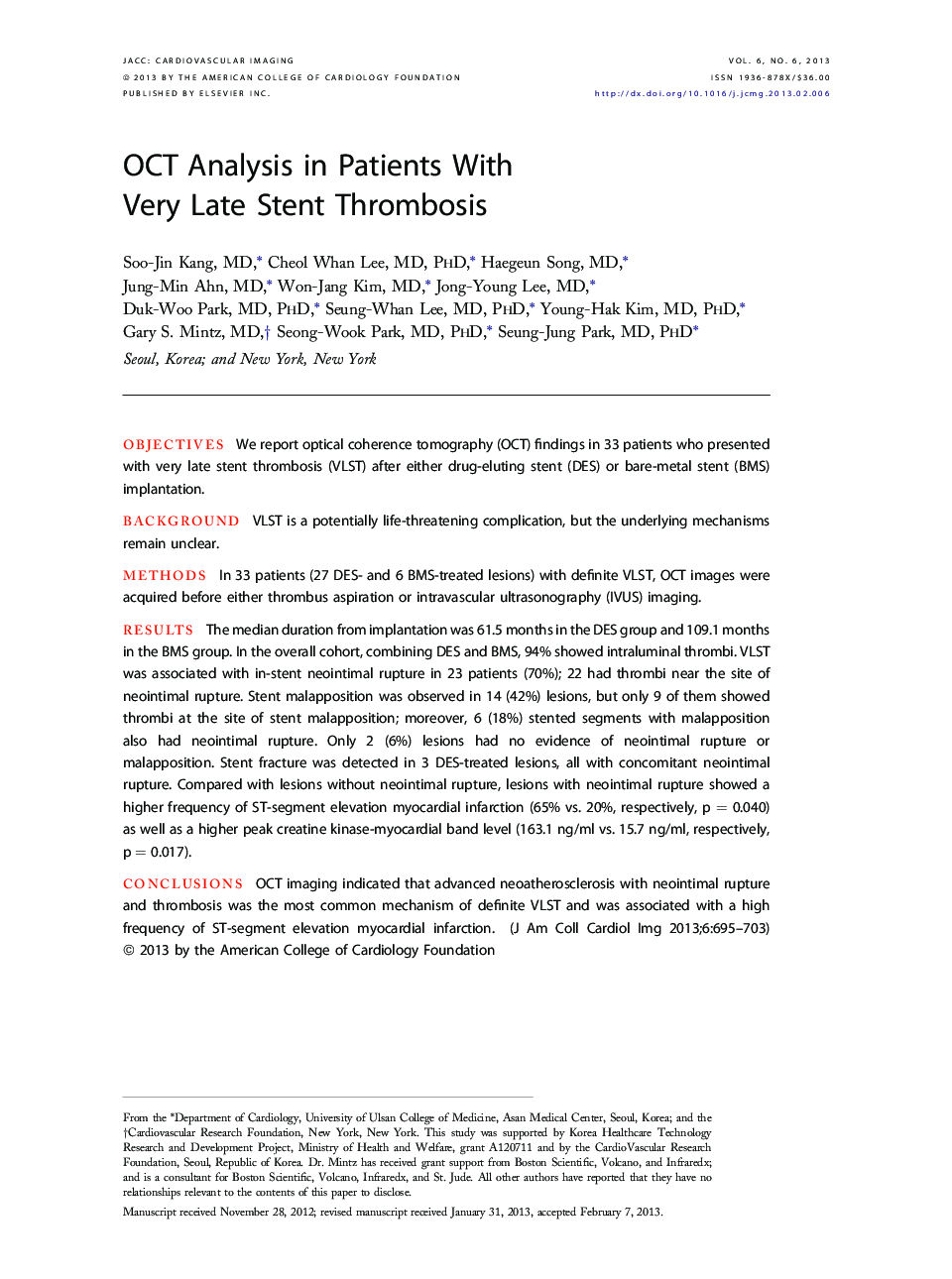| Article ID | Journal | Published Year | Pages | File Type |
|---|---|---|---|---|
| 2937957 | JACC: Cardiovascular Imaging | 2013 | 9 Pages |
ObjectivesWe report optical coherence tomography (OCT) findings in 33 patients who presented with very late stent thrombosis (VLST) after either drug-eluting stent (DES) or bare-metal stent (BMS) implantation.BackgroundVLST is a potentially life-threatening complication, but the underlying mechanisms remain unclear.MethodsIn 33 patients (27 DES- and 6 BMS-treated lesions) with definite VLST, OCT images were acquired before either thrombus aspiration or intravascular ultrasonography (IVUS) imaging.ResultsThe median duration from implantation was 61.5 months in the DES group and 109.1 months in the BMS group. In the overall cohort, combining DES and BMS, 94% showed intraluminal thrombi. VLST was associated with in-stent neointimal rupture in 23 patients (70%); 22 had thrombi near the site of neointimal rupture. Stent malapposition was observed in 14 (42%) lesions, but only 9 of them showed thrombi at the site of stent malapposition; moreover, 6 (18%) stented segments with malapposition also had neointimal rupture. Only 2 (6%) lesions had no evidence of neointimal rupture or malapposition. Stent fracture was detected in 3 DES-treated lesions, all with concomitant neointimal rupture. Compared with lesions without neointimal rupture, lesions with neointimal rupture showed a higher frequency of ST-segment elevation myocardial infarction (65% vs. 20%, respectively, p = 0.040) as well as a higher peak creatine kinase-myocardial band level (163.1 ng/ml vs. 15.7 ng/ml, respectively, p = 0.017).ConclusionsOCT imaging indicated that advanced neoatherosclerosis with neointimal rupture and thrombosis was the most common mechanism of definite VLST and was associated with a high frequency of ST-segment elevation myocardial infarction.
